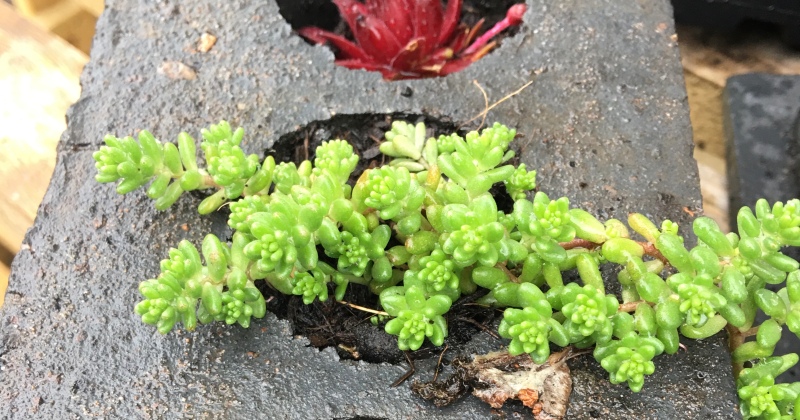Facilitator Carol ran a workshop showing participants how to Upcycle some bricks into a nifty planter that takes minimal care. Here’s the basics of how to do this at home.
Succulents are not very demanding plants and can survive, or even thrive, in conditions you might not expect. Succulents don’t need a lot of water and soil to thrive, that’s why you can find them growing on the sides of walls with their roots in the tiniest of crevices. We can take advantage of this to make a mini garden planter in the smallest of spaces.

The Garden was donated a pile of bricks and we thought that they could have a new life as mini planters so set up a workshop to show people how to do it.


The brick holes don’t have a bottom so you need to fill the spaces on a flat surface that will stay holding the soil in until you can put the brick in it’s final position. We used slate for our demonstration one as it was being moved about a lot and cardboard for the ones being taken home to their final position. Eventually the roots will grow enough to hold the soil in the brick air space. But it’s best not to move them any more than neccessary.
- place the brick on a firm surface
- fill the hole with a compost/grit/sand mix , firm it down.
- choose a succulent for each space in the brick, remember they will grow to fill the space available.
- make a small hole for the roots and place the roots in and cover with soil.
- add extra soil if needed to top the soil to just below the height of the brick. no roots should be showing.
- Do not water until the brick is in it’s final position, and it’s ok to wait a week before watering as the succulent plants prefer a drier soil
These are outdoor succulents, you could do the same for indoor, less hardy, succulents, just make sure you have a tray to put it on in case water or soil leaks out the bottom of the brick holes.
If you have other items you would like to upcycle as a succulent planter, the important things to remember are to make sure the plants won’t get waterlogged or spend a long time sitting in water (make sure there are drainage holes in the bottom of the container). Use a free draining soil (add stones and sand to regular peat free compost), and don’t overwater- they will survive better too dry than too wet.
